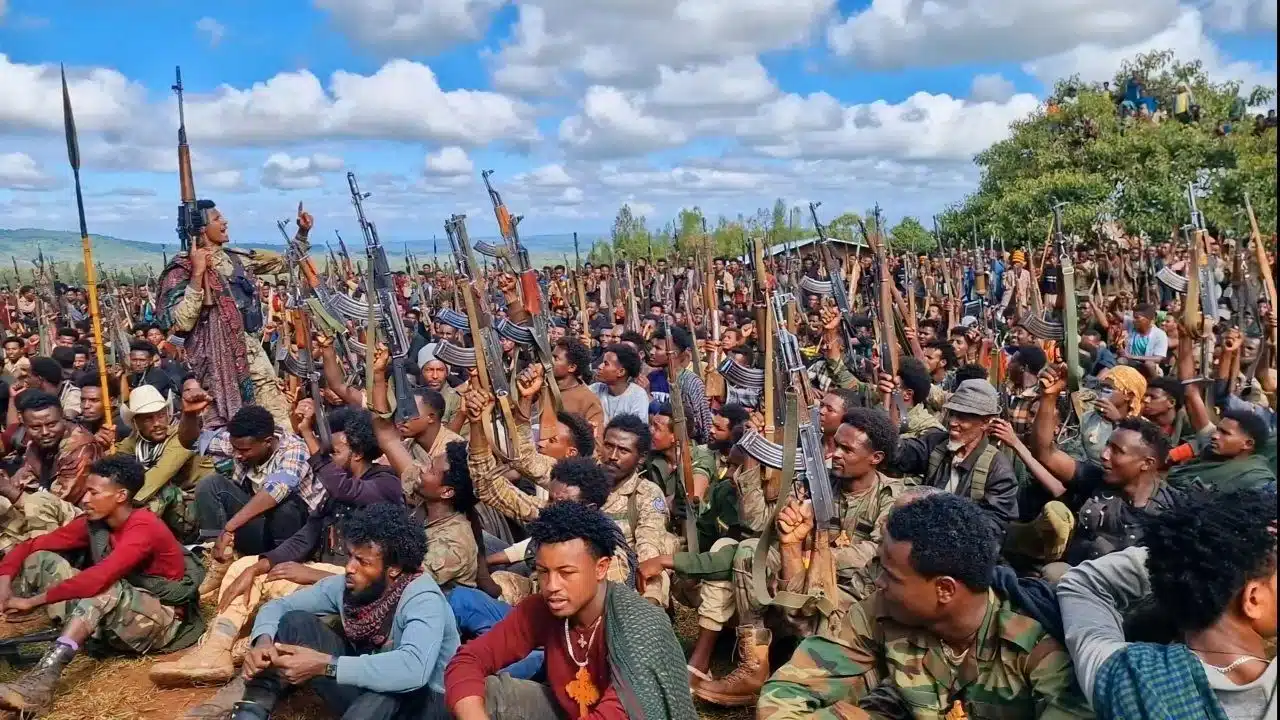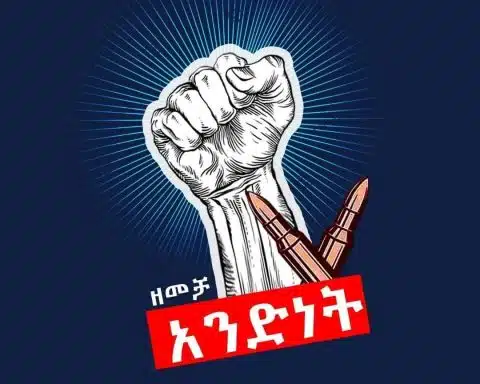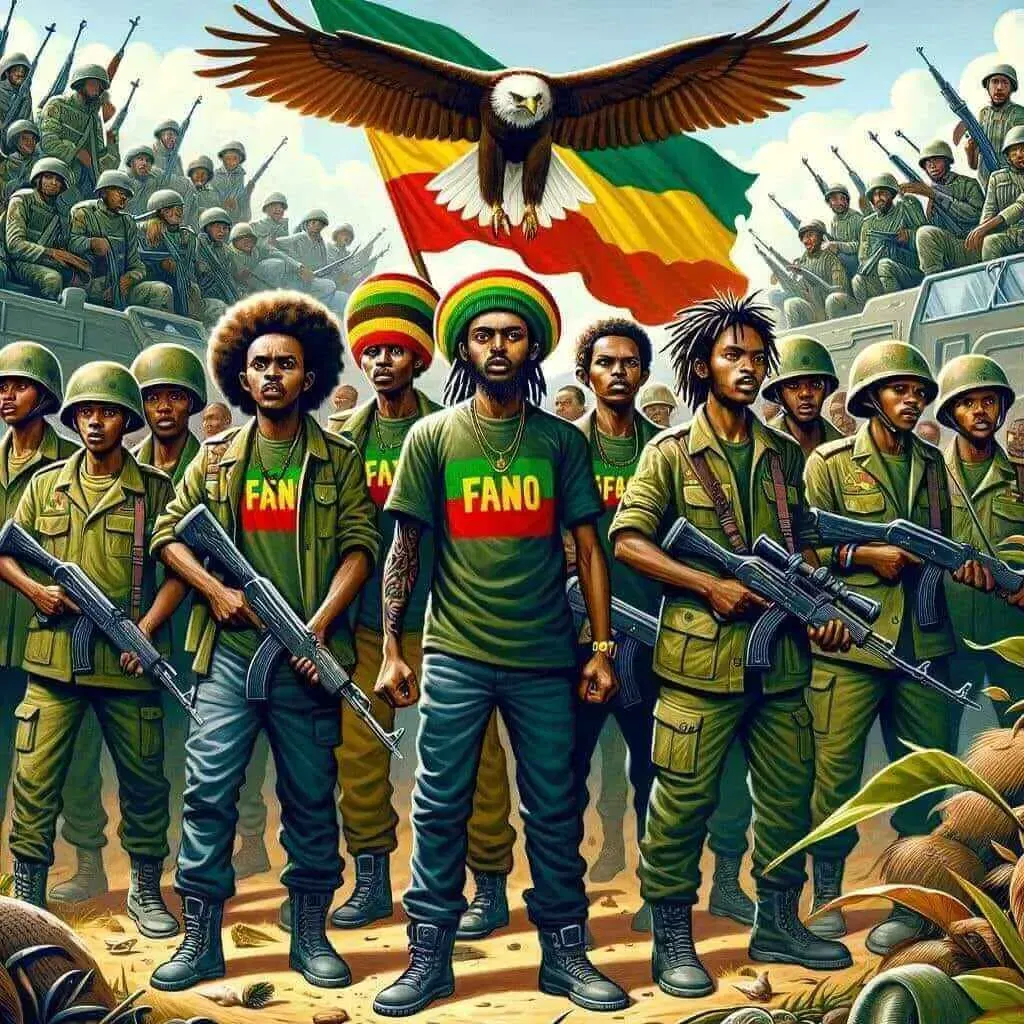 In the heart of Ethiopia’s Amhara region, a significant development is unfolding as Fano armed groups come together to announce a merger. These nationalist militiamen have launched a major offensive against the army, demonstrating a surge in coordinated attacks. Despite their efforts, the unity among the insurrection remains fragmented with multiple groups involved. Yet, a pivotal change on the horizon hints at a new direction, where some factions are preparing to form a common entity. This anticipated merger in the Amhara region could shift the dynamics, with implications for both regional stability and the broader national context. The world watches as these developments unfold, potentially redefining the course of the conflict.
In the heart of Ethiopia’s Amhara region, a significant development is unfolding as Fano armed groups come together to announce a merger. These nationalist militiamen have launched a major offensive against the army, demonstrating a surge in coordinated attacks. Despite their efforts, the unity among the insurrection remains fragmented with multiple groups involved. Yet, a pivotal change on the horizon hints at a new direction, where some factions are preparing to form a common entity. This anticipated merger in the Amhara region could shift the dynamics, with implications for both regional stability and the broader national context. The world watches as these developments unfold, potentially redefining the course of the conflict.
Introduction to Amhara Region Conflict
The Amhara Region, located in the northern part of Ethiopia, has long been a focal point of cultural, economic, and political significance. Recently, it has become the epicenter of a violent conflict that involves various factions, notably the Fano armed groups. This persistent struggle signals a complex tapestry of historical grievances, aspirations, and power dynamics that shape the region’s current state of unrest.
Background of the Conflict
Background of the Conflict in Amhara is deeply rooted in historical disputes and socio-political tensions that have simmered for decades. Historically, the Amhara ethnic group has been one of Ethiopia’s largest and most influential communities. The region has experienced waves of governmental changes, border disputes, and ethnic tensions which have sometimes resulted in violence.
A significant catalyst for the present conflict was the restructuring of provincial borders and the sensitive question of self-administration which led to heightened ethnic nationalism. This was compounded by increasing dissatisfaction with the central government’s policies and resource allocation, which many in Amhara perceived as unjust and discriminatory.
In recent years, the conflict has shifted from mere political grievances to a more armed struggle. Multiple factions, including the Fano militias, have taken up arms in a bid to assert their demands and protect their territories from both internal and external threats.
Key Players in the Amhara Conflict
Key Players in the Amhara Conflict primarily involve nationalist militias such as the Fano groups, which have grown in both number and influence. Originally formed as voluntary youth defense organizations, these groups have morphed into significant entities capable of orchestrating substantial offensives.
The Ethiopian National Defense Force (ENDF) is another critical player, as they are responsible for maintaining national integrity and countering insurrections. Their involvement has sometimes led to intense clashes, further exacerbating the situation.
Other local militias and ethnic factions also contribute to the complex mosaic of the conflict, each with unique motivations and goals. Additionally, political parties and regional administrations attempt to wield influence either by supporting these groups or seeking diplomatic resolutions.
Overall, the tapestry of key players reflects a mixture of alliances and rivalries, making the Amhara Region conflict a highly intricate affair with far-reaching implications.
Origins and Growth of Fano Militias
The Fano militias are deeply rooted in the history and cultural fabric of the Amhara region. Originally emerging as a self-help group, the Fano movement traces its origins to a collective of individuals dedicated to preserving the Amhara identity and territory. During the imperial era of Ethiopia, local defense units resembling Fano were responsible for safeguarding farmland and communities against external threats. Fast-forward to the contemporary period, and these militias have resurrected, evolving into significant players in regional security dynamics.
The resurgence of Fano militias is attributed to multiple factors, including political centralization discontent, growing ethnic tensions, and regional disputes. With their distinctive loose structure, these militias gained momentum as locals rallied to address grievances perceived to be ignored by state mechanisms. The Fano’s rapid growth was further fueled by access to weapons and communication technologies, making coordination across disparate groups more seamless. Over the years, the militarization of the movement has transitioned from traditional defense roles to more assertive and organized entities with considerable influence in the Amhara region.
Objectives of Fano Groups
The objectives of Fano groups are multifaceted, reflecting both short-term and long-term goals rooted in their core mission of territorial preservation and regional autonomy. Key among their aims is the defense of the Amhara people and land, which they perceive as under constant threat from external territories and political maneuvers within Ethiopia.
Fano groups seek to assert political influence by championing Amhara interests in national discourse, a reaction to perceived marginalization under broader Ethiopian reforms. They aim to establish a more decentralized governance structure, ensuring that local voices have greater representation and decision-making power. Safeguarding cultural heritage and promoting Amhara traditions are also central to their objectives, often aligning with the group’s militaristic activities to protect identity and sovereignty.
In summary, while Fano’s origins are entrenched in grassroots defense, their objectives have evolved to encompass broader societal and political ambitions. This raises essential discourse around their role in Ethiopia’s future landscape.
Motivations Behind the Merger
The recent developments in the Amhara region have seen various Fano armed groups moving towards a significant merger. This move is driven by several motivations, ranging from strategic benefits to political objectives. Understanding these motivations is crucial to grasping the implications of such a monumental step.
Strategic Benefits of Unification
The strategic benefits of merging for the Fano armed groups are numerous. Foremost among them is the increase in operational capacity. By coming together under a unified command, these groups can more effectively coordinate actions and pool resources, thereby enhancing their overall military strength against the opposing forces.
This unification is likely to lead to a more aligned strategy, allowing the group to undertake larger, more impactful operations.
Additionally, a combined entity can facilitate better communication, reducing the risk of misunderstandings and internal conflicts that could arise from fragmented command structures. In simple terms, unity can translate to improved efficiency and effectiveness in achieving their goals.
There is also a notable logistical advantage. A larger collective not only has access to more significant supplies and equipment, but it can also streamline the process of acquiring necessary arms and other resources. This means they can sustain longer operations compared to isolated groups that might struggle with logistical barriers.
Political Objectives of the Merger
On the political front, the merger stands to grant the Fano groups increased bargaining power. By consolidating into one entity, they can present themselves as a more formidable force when negotiating with either the Ethiopian government or other political players on the national stage.
Perhaps more importantly, their political visibility is enhanced. With unity, they can voice their causes and grievances more effectively, likely leading to greater attention and concessions from authorities.
Additionally, a unified Fano group can work towards its broader political goals with more clarity and focus. There is a potential shift from purely military actions to a broader spectrum of political engagement, which could include advocacy, diplomacy, and engaging with other stakeholders to achieve lasting change in the Amhara region.
In conclusion, the motivations for this merger are deeply rooted in both their strategic and political aspirations. The unification offers a pathway to enhanced effectiveness on the battlefield and increased influence in political arenas, making it a significant development in the ongoing Amhara conflict.
Consequences of a Unified Fano Entity
The potential unification of Fano armed groups into a single entity represents a significant shift in the dynamic of the Amhara conflict. By creating a unified front, these groups could alter the balance of power in the region, influencing both the political and social landscapes. Below are some key consequences that might arise from such unification.
Implications for the Amhara Region
Potential Effects on Regional Stability
Regional Stability could be seriously affected by the emergence of a unified Fano organization. A consolidated front can lead to heightened tensions with national and regional governments, potentially sparking further clashes. This may result in destabilizing the currently fragile peace in the Amhara region.
A unified Fano entity might exert more coordinated and powerful resistance against governmental forces. This could either diminish the frequency of small, uncoordinated skirmishes or escalate into larger conflicts, depending on the group’s strategies and government responses.
Impact on Local Populations
The local populations within the Amhara region might experience significant changes. On one hand, a more organized Fano presence could provide a sense of protection and unity among certain communities, fostering a spirit of self-reliance.
Note: Increased military activities could lead to humanitarian concerns, such as displacement or limited access to essential resources.
On the other hand, increased militarization and conflict could threaten to displace locals, disrupt their livelihoods, and contribute to a climate of fear and uncertainty. Access to crucial resources such as food, healthcare, and education may be hindered as a result of ongoing or intensified conflicts.
Response from Ethiopian Government
The Ethiopian government’s response to a unified Fano entity is likely to be multifaceted. Initially, the government may seek to increase military presence in the region to deter any unified insurgency efforts. Diplomatic attempts may focus on negotiating with the Fano leadership to de-escalate tensions and seek peaceful resolutions.
Moreover, the government might implement strategic policies aimed at undermining the unity of the Fano groups, either through the promotion of internal divisions or incentives to disband.
International Reactions and Concerns
International reactions to a unified Fano movement are anticipated to reflect broader geopolitical interests and humanitarian perspectives.
Governments and NGOs may express concern about the deteriorating security situation and the potential for escalating violence. They may call for restraint and emphasize the importance of dialogue and peaceful conflict resolution mechanisms.
Some international bodies could also tighten their scrutiny on Ethiopia regarding human rights violations, advising the Ethiopian government and Fano leadership to adhere to international norms. Additionally, there may be efforts to facilitate peace talks through diplomatic channels to prevent a further escalation of violence in the region.





